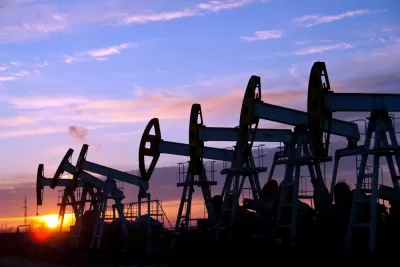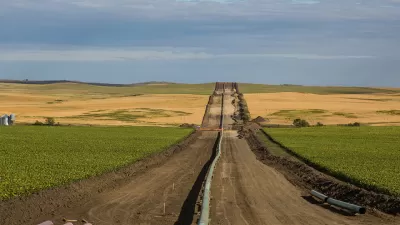The current shale boom can't last forever. A new report says it will end much sooner that the federal government realizes.

According to Tina Casey, a report by the Post Carbon Institute, titled "Drilling Deeper: A Reality Check on U.S. Government Forecasts for a Lasting Tight Oil & Shale Gas Boom," makes a dire prediction about the longevity of the domestic shale oil and gas boom, predicting that "reserves will peak and drop off rapidly, long before officially predicted by the US Energy Information Agency."
The Post Carbon Institute is the same organization that checked the U.S. EIA's projections for California’s Monterey Shale 1 formation—projections that ended up missing the mark by 96 percent—from 13.7 billion barrels to 600 million barrels.
This time, the "report examines EIA’s forecasts for 12 shale plays that together cover 82% of tight oil (tight oil refers to oil recovered from shale formations, not to be confused with oil shale) and 88% of shale gas production."
The report's analysis spells early doom for the current boom, as quoted in Casey's article:
- "Tight oil production from the two top plays, the Bakken and Eagle Ford, will underperform the EIA’s reference case oil recovery by 28% from 2013 to 2040…By 2040, production rates from the Bakken and Eagle Ford will be less than a tenth of that projected by the EIA."
- "Shale gas production from the top seven plays will underperform the EIA’s reference case forecast by 39% from 2014 to 2040…By 2040, production rates from these plays will be about one-third that of the EIA forecast."
FULL STORY: Fracking’s Slow-Motion Train Wreck Revealed In New Report

Maui's Vacation Rental Debate Turns Ugly
Verbal attacks, misinformation campaigns and fistfights plague a high-stakes debate to convert thousands of vacation rentals into long-term housing.

Planetizen Federal Action Tracker
A weekly monitor of how Trump’s orders and actions are impacting planners and planning in America.

In Urban Planning, AI Prompting Could be the New Design Thinking
Creativity has long been key to great urban design. What if we see AI as our new creative partner?

King County Supportive Housing Program Offers Hope for Unhoused Residents
The county is taking a ‘Housing First’ approach that prioritizes getting people into housing, then offering wraparound supportive services.

Researchers Use AI to Get Clearer Picture of US Housing
Analysts are using artificial intelligence to supercharge their research by allowing them to comb through data faster. Though these AI tools can be error prone, they save time and housing researchers are optimistic about the future.

Making Shared Micromobility More Inclusive
Cities and shared mobility system operators can do more to include people with disabilities in planning and operations, per a new report.
Urban Design for Planners 1: Software Tools
This six-course series explores essential urban design concepts using open source software and equips planners with the tools they need to participate fully in the urban design process.
Planning for Universal Design
Learn the tools for implementing Universal Design in planning regulations.
planning NEXT
Appalachian Highlands Housing Partners
Mpact (founded as Rail~Volution)
City of Camden Redevelopment Agency
City of Astoria
City of Portland
City of Laramie




























